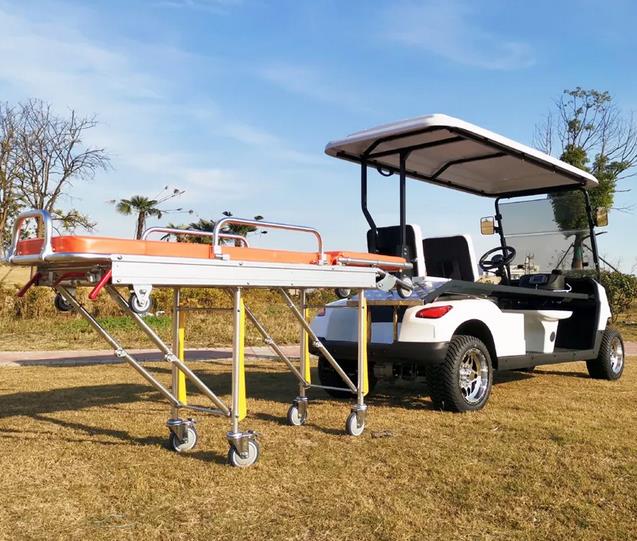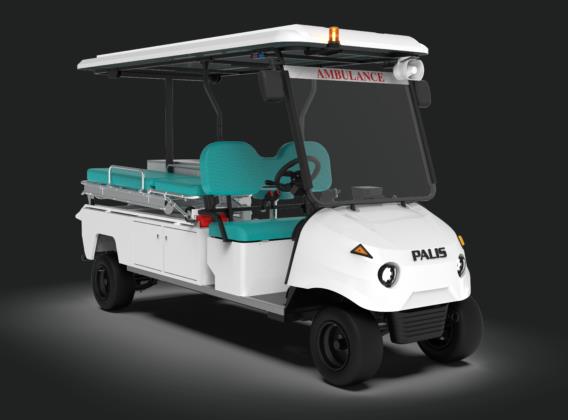Content Menu
● Introduction to Electric Ambulance Carts
>> Key Features of Electric Ambulance Carts
● Introduction to Traditional Golf Cart Conversions
>> Challenges in Golf Cart Conversions
● Reliability Comparison
● Case Studies and Examples
>> Electric Ambulance Cart Examples
>> Golf Cart Conversion Examples
● Operational Considerations
>> Maintenance and Upkeep
>> Training for Operators
>> Cost Analysis
● Future Developments
● Integration into Emergency Services
● Conclusion
● Frequently Asked Questions
>> 1. What are the primary advantages of electric ambulance carts over traditional golf cart conversions?
>> 2. How do lithium batteries affect the performance of golf cart conversions?
>> 3. What are the common challenges faced during golf cart conversions for emergency use?
>> 4. How do electric ambulance carts address range anxiety compared to traditional vehicles?
>> 5. Can traditional golf carts be converted to meet the needs of emergency medical services effectively?
In recent years, electric vehicles have gained significant attention due to their environmental benefits and cost-effectiveness. This trend has also influenced the development of specialized vehicles like electric ambulance carts and traditional golf cart conversions. Both types of vehicles are used for emergency response and transportation, but they differ significantly in design, functionality, and reliability. In this article, we will delve into the details of electric ambulance carts and traditional golf cart conversions, comparing their reliability and suitability for emergency medical services.

Introduction to Electric Ambulance Carts
Electric ambulance carts are specifically designed for emergency medical services, integrating advanced medical equipment and electric mobility. These carts are built with durability and safety in mind, featuring reliable braking systems, enhanced suspension, and intuitive controls for smooth maneuvering in various terrains. They offer quiet and efficient transport, allowing medical personnel to focus on patient care without the distraction of noisy engines. Integrated power outlets and charging ports support the operation of electronic medical devices, ensuring they are ready for immediate use.
Key Features of Electric Ambulance Carts
- Advanced Medical Equipment: Electric ambulance carts are equipped with dedicated spaces for life support systems, diagnostic tools, and first-aid supplies. Secure mounting points and easy-access storage ensure that all equipment is safely stowed yet readily available.
- Electric Drivetrain: The electric drivetrain provides quiet and efficient transport, reducing environmental impact and enhancing patient comfort during transport.
- Customization Options: Many electric ambulance carts offer customization options to meet specific needs, such as different seating capacities and medical equipment configurations.
Introduction to Traditional Golf Cart Conversions
Traditional golf cart conversions involve modifying standard golf carts to serve as emergency vehicles. This process often includes installing medical equipment and modifying the cart's structure to accommodate stretchers or other emergency gear. While golf carts are versatile and can be easily customized, converting them into emergency vehicles requires careful consideration of their original design limitations.
Challenges in Golf Cart Conversions
- Structural Integrity: Golf carts are not designed to carry heavy medical equipment or support the weight of stretchers and patients. Conversions may require reinforcing the frame to ensure safety and stability.
- Electrical System Compatibility: Integrating medical devices into a golf cart's electrical system can be challenging, requiring careful management of power consumption and voltage compatibility.
- Regulatory Compliance: Converted golf carts must comply with local regulations regarding emergency vehicles, which can be complex and vary by jurisdiction.

Reliability Comparison
When comparing the reliability of electric ambulance carts and traditional golf cart conversions, several factors come into play:
1. Design Purpose: Electric ambulance carts are specifically designed for emergency medical services, ensuring that they meet the necessary safety and performance standards from the outset. In contrast, golf cart conversions are adapted from vehicles originally intended for recreational use, which may compromise their reliability in emergency situations.
2. Integration of Medical Equipment: Electric ambulance carts are built with secure mounting points for medical equipment, reducing the risk of damage or malfunction during transport. Golf cart conversions may require additional modifications to safely integrate this equipment.
3. Environmental and Operational Factors: Electric ambulance carts offer silent operation and reduced environmental impact, which can be beneficial in hospital settings or quiet areas. However, they may face challenges related to battery range and charging infrastructure. Golf cart conversions, if using traditional lead-acid batteries, may have similar range issues but can be more easily adapted to existing charging systems.
Case Studies and Examples
Electric Ambulance Cart Examples
- 72V Lithium Electric Ambulance Cart: This cart is designed for carrying wounded individuals and features a walk-away stretcher. It is suitable for use in stadiums, hospitals, and resorts, offering a range of 80-100 km and a maximum speed of 32 km/h.
Golf Cart Conversion Examples
- Custom Golf Cart Gallery: Companies like Wildar Golf Carts & Trailers offer custom-built golf carts that can be adapted for various purposes, including emergency services. These conversions can include unique designs and features tailored to specific needs.
Operational Considerations
Maintenance and Upkeep
Electric ambulance carts generally require less maintenance compared to traditional golf cart conversions. They have fewer moving parts and no oil changes are needed, reducing the risk of mechanical failures. However, regular checks on battery health and charging systems are crucial to ensure optimal performance.
Training for Operators
Operators of both electric ambulance carts and golf cart conversions need specialized training to handle emergency situations effectively. This includes understanding the vehicle's capabilities, navigating through crowded areas, and managing medical equipment during transport.
Cost Analysis
While electric ambulance carts are more expensive upfront, they offer long-term cost savings through reduced maintenance and lower operational costs. Golf cart conversions can be more budget-friendly initially but may require additional investments for modifications and compliance with regulations.
Future Developments
As technology advances, electric ambulance carts are likely to integrate more sophisticated medical equipment and advanced navigation systems. The use of AI and IoT technologies could enhance real-time monitoring and communication during emergency responses. For golf cart conversions, advancements in battery technology and modular design could improve their adaptability and efficiency.
Integration into Emergency Services
Electric ambulance carts are well-suited for integration into existing emergency services due to their reliability and specialized design. They can be easily deployed in urban and rural settings, providing efficient transport and care in a variety of scenarios. Golf cart conversions, while adaptable, require careful planning and modification to ensure they meet the standards required for emergency medical services.
Conclusion
In conclusion, electric ambulance carts are generally more reliable for emergency medical services due to their specific design for this purpose. They integrate advanced medical equipment seamlessly and offer quiet, efficient transport. However, traditional golf cart conversions can still be viable options if properly modified and maintained. The choice between these two options depends on specific needs, budget constraints, and the availability of charging infrastructure.

Frequently Asked Questions
1. What are the primary advantages of electric ambulance carts over traditional golf cart conversions?
Electric ambulance carts are designed specifically for emergency services, offering better integration of medical equipment, quieter operation, and reduced environmental impact. They are built with safety and performance in mind, making them more reliable for emergency situations.
2. How do lithium batteries affect the performance of golf cart conversions?
Lithium batteries can significantly improve the performance of golf cart conversions by providing higher power density, lighter weight, and consistent voltage output. However, they require careful selection and installation to avoid compatibility issues and ensure optimal performance.
3. What are the common challenges faced during golf cart conversions for emergency use?
Common challenges include ensuring structural integrity, managing electrical system compatibility, and complying with regulatory requirements. Additionally, integrating medical equipment safely and efficiently can be complex.
4. How do electric ambulance carts address range anxiety compared to traditional vehicles?
Electric ambulance carts are equipped with advanced battery technology that ensures sufficient range for emergency situations. Strategic placement of charging infrastructure at medical facilities and ambulance stations supports their seamless integration into emergency services.
5. Can traditional golf carts be converted to meet the needs of emergency medical services effectively?
Yes, traditional golf carts can be converted to meet emergency needs, but they require careful modification and maintenance. It is crucial to ensure that the conversion meets safety standards and regulatory requirements for emergency vehicles.










































